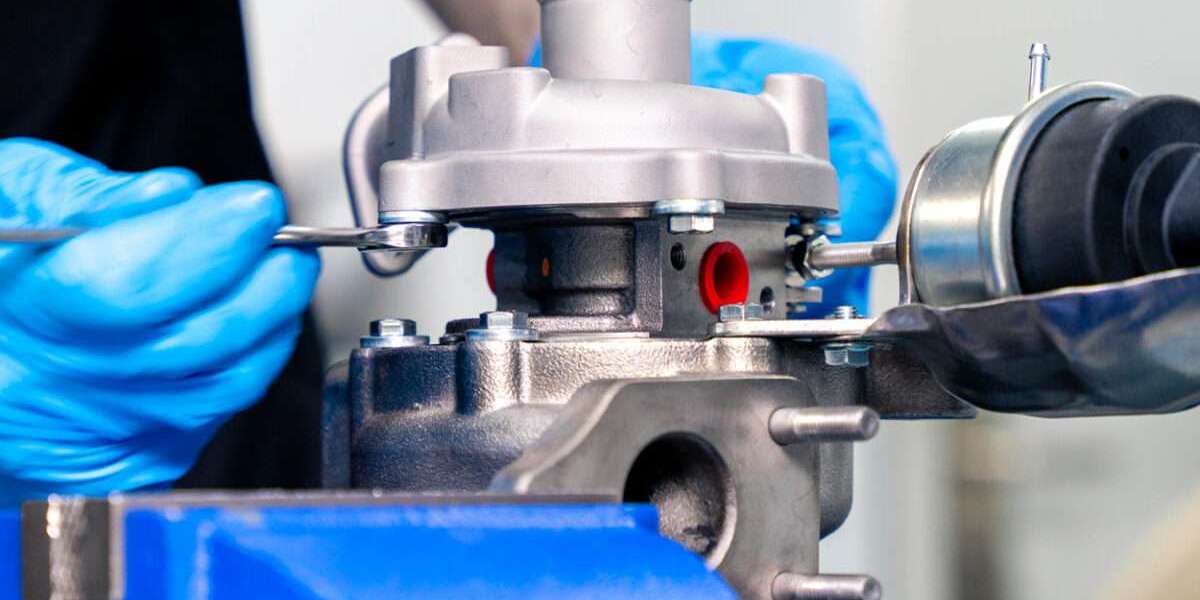Turbochargers are an essential part of today's vehicles, used in performance cars as well as in most diesel engines. They greatly increase engine power by pushing more air into the internal combustion of your engine, resulting in better acceleration and higher horsepower, along with greater fuel efficiency. But what happens to these components as they serve their purpose is the real issue for many car types. Heat, pressure and friction can degrade turbo parts over time and after many miles of use. Often that means either replacing or refurbishing a turbo. Replacement parts are expensive, but turbo refurbishment is a much more environmentally friendly way to restore turbo performance without the hefty price tag of a brand-new turbo.
In this article, we will look at the process of having your turbo reconditioned, the benefits this provides and the indications that your turbo requires attention.
What is Turbo Refurbishment?
The Turbo refurbishment restores a used or damaged turbocharger to is OEM performance level. Individual components of the turbine housing area removed and the turbine / compressor wheel are cleaned. The compressor wheels and turbine wheels are cleaned at a series of individual benches using a multitude of different ultrasonic baths. Once cleaned, the technician will then visually inspect the wheel and measure critical dimensions of the wheel. If there are any signs of damage or wear, the individual component will be replaced. A rebuilt turbocharger should work like a brand new unit. Each turbo refurbishment is serviced by highly specialized technician with the right tools and knowledge to restore the turbo to factory-like conditions.
Why should one choose to refurbish a turbo?
There are several reasons for this decision. First and foremost, this approach saves a substantial amount of money as opposed to buying a brand new one. By doing so you also gain other advantages including increasing the overall performance of your vehicle.
Key Benefits of Turbo Refurbishment
1. Cost Savings
The most obvious advantage of turbo reconditioning is cost. Even though rebuilt turbochargers will always be cheaper than a new, off-the-shelf turbo, in some instances they can outdo the pricing of a new turbocharger by a margin of 2 to 1. For example, if a particular aftermarket brand for a high-performance or rare model is not in production any longer, the price of a new turbo could double. Reconditioning is a very cost-effective option compared to pumping money into an old car, and many times it is a more economical alternative to replacing crucial engine parts.
2. Environmental Impact
Moreover, refurbishing a turbocharger is more environmentally friendly than purchasing a new one. The reason for that is clear: by keeping unchanged the parts of the turbo that are already made, the refurbishment vaults less waste by its planed-out process than if a new turbo would have been bought for the purpose. This means that less energy has to be consumed in its manufacturing process and, in so doing, less materials would be thrown out of the plant at the end of this process.
3. Restored Performance
To put it simply, if you have your turbocharger properly rebuilt, it will give the exact same result as a brand-new version. This is because the rebuilt turbo will use all-new parts for things like bearings, seals, turbine blades and anything else that is worn-out.
4. Quick Turnaround
Moreover, there are several occasions when such a turbo refurbishment can be undertaken much quicker than say when an order for a new generic turbo would need to be placed and a new turbo unit installed. If damage is not too severe, and a suitable replacement is available for a model, then a refurbished turbo could easily be available within a day or two, achieving road-readiness quicker.
Signs Your Turbo May Need Refurbishment
If you spot the signs of a failing turbo early enough, you can generally fix or replace it before it blows completely: Look out for:
Loss of Power: Does your car not accelerate as fast as it should or lose power? You may have a problem with your turbo.
Too much Smoke: If the exhaust is blue or black smoke, the oil is leaking into the turbo and, because of the heat, the motor in the turbo is destroyed. This means that the turbo will be useless and that the internal damage has been done.
Unusual sounds: Whining, grinding or whistling from the engine bay are symptoms of worn bearings or damage to the internal turbo.
Increased Oil Consumption: Higher oil usage could indicate that oil is percolating into the turbo system because of weakened seals.
Conclusion
As turbo refurbishment costs less than replacing a used or new turbo, is fully sustainable and restores performance in a day; turbo refurbishment is an excellent, cost-effective way to keep your vehicle on the road. If you are a vehicle owner and the engine is starting to misfire, pull out any power, lose any torque/boost/power, it could be your turbo. The use of refurbishment would extend the life of the turbo and prove to be far more cost-effective than replacing your turbo with one as good, if not better, than new. The after-effects of turbo refurbishment will leave your vehicle’s turbo performing like new.








